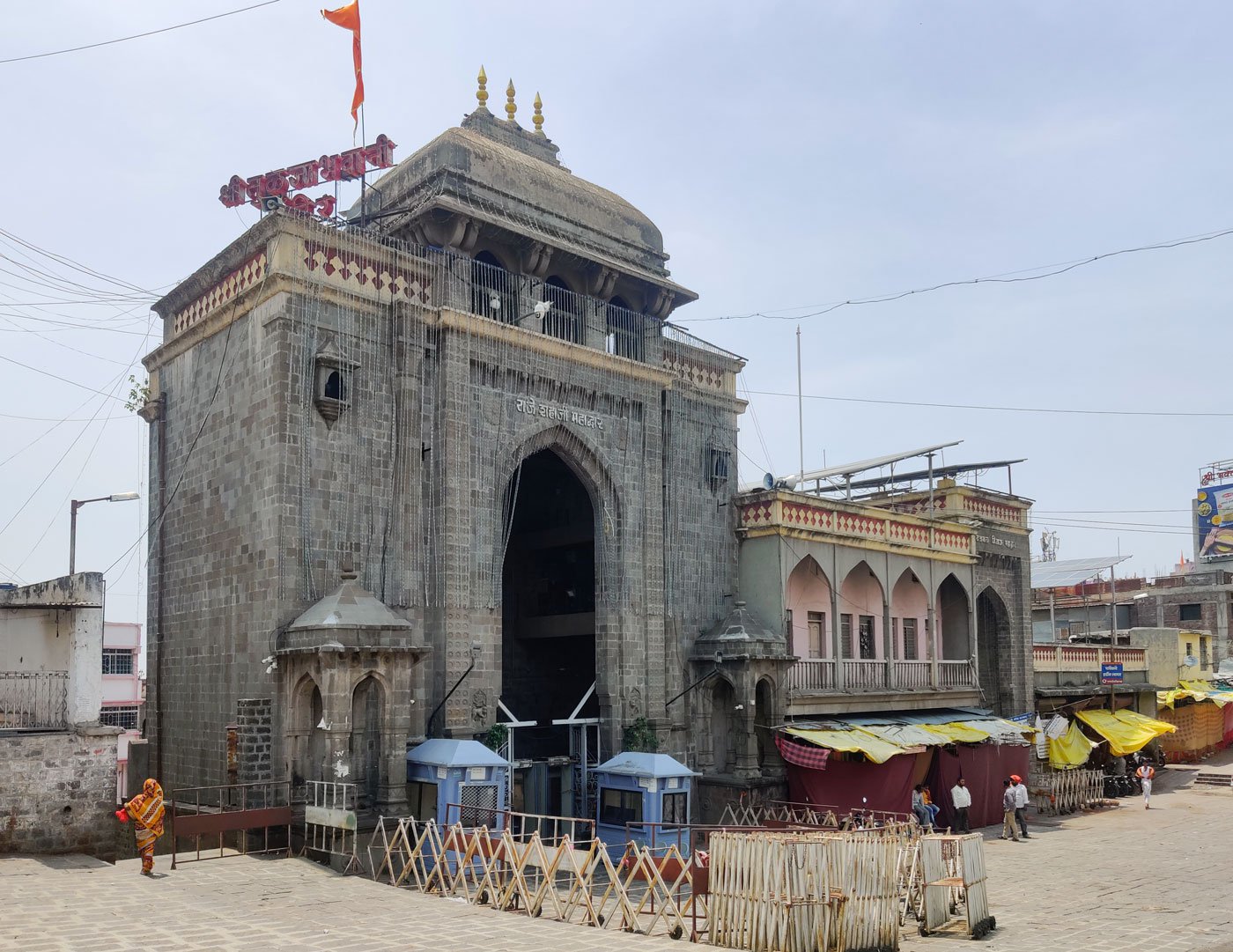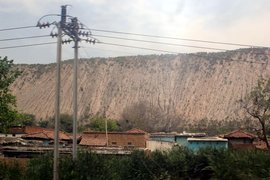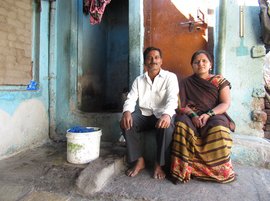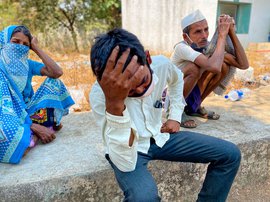When the second wave of Covid-19 got to Osmanabad district this year, it didn’t just knock on the doors – it barged right through them. In Tuljapur tahsil , it dragged the Tulja Bhavani temple into playing a role in hastening the crisis.
Jaysingh Patil, who nearly died from Covid-19, has vowed to stay clear of the temple until it is safe. “I am a devotee,” he says. “I respect people’s faith. But it is not wise to open temples in the midst of a pandemic.”
Patil, 45, works as a clerk at the Tulja Bhavani Temple Trust. “In February this year, I was asked to manage the queue of hundreds of people,” he says. The temple is one of the most popular pilgrimage destinations of Maharashtra, visited by thousands from all over India every day. “The devotees are aggressive. They charge at you if they are stopped from getting inside the temple. I must have been infected with Covid-19 while managing the crowd.”
He spent more than two weeks on oxygen support in the intensive care unit of a hospital. His blood oxygen levels fluctuated 75-80 per cent – anything less than 92 per cent, doctors say, is cause for concern. “I survived somehow,” says Jaysingh. “But I feel fatigued even after months.”
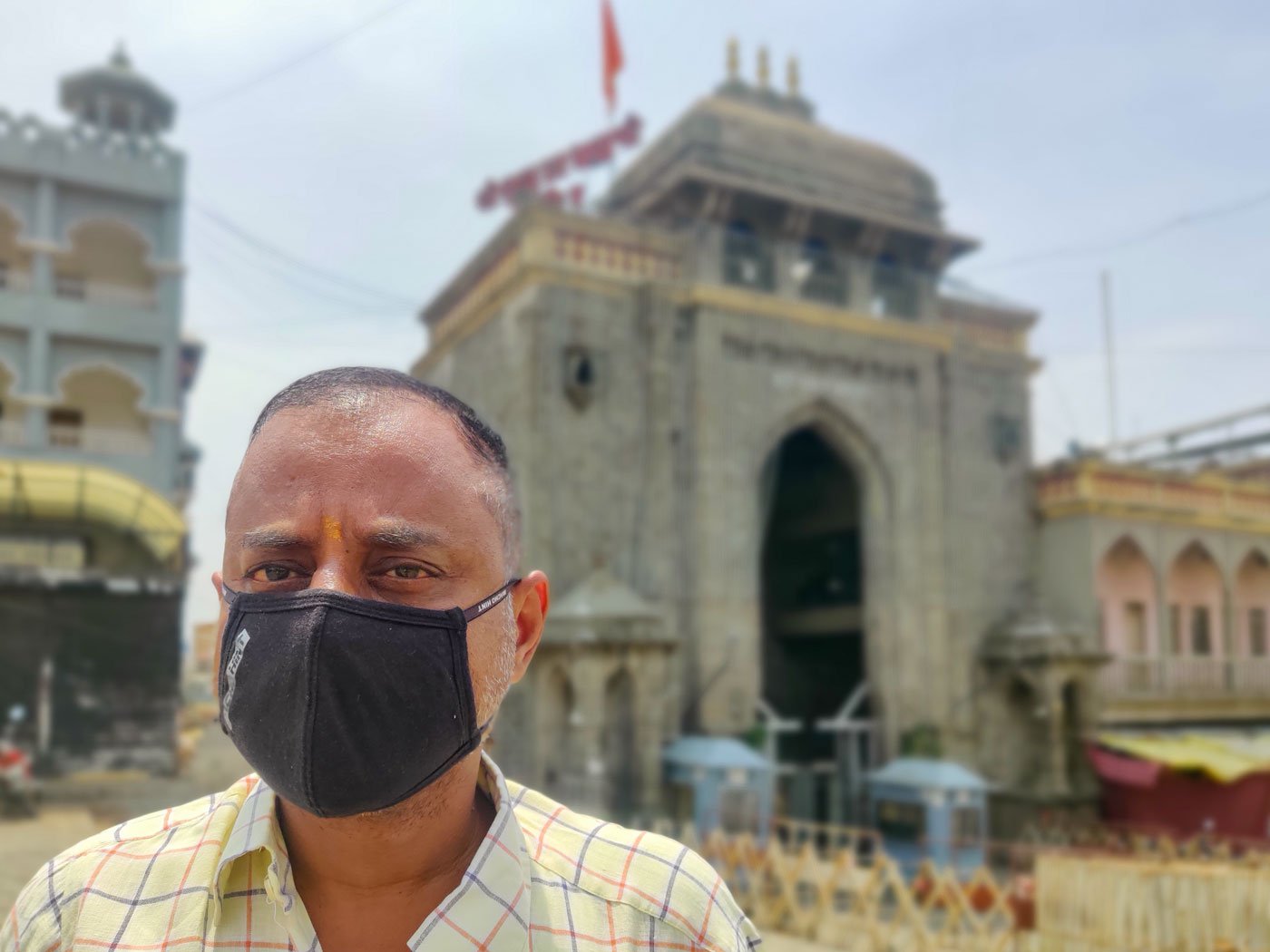
Jaysingh Patil nearly died of Covid-19 after he was tasked with managing the queues of devotees visiting the temple
A month before he fell ill, his 32-year-old brother, Jagdish, survived a similar scare. He spent nearly three weeks in hospital, with blood oxygen levels going below 80 per cent. “He is a priest at the temple,” says Jaysingh. “He was infected when he came in contact with a devotee who was Covid-positive. Both of us had a scary experience.”
The experience was expensive too. Between the two brothers, they spent about Rs. 5 lakhs on their treatments. “Luckily, we survived. But thousands of people are dying and families are being ruined. No matter how much you try, physical distancing always goes for a toss in temples,” says Jaysingh.
The Tulja Bhavani temple, believed to be a 12th-century shrine, has a turnover of Rs. 400 crore per year, says Saudagar Tandale, Tuljapur’s tahsildar . The economy of Tuljapur tahsil is dependent on the temple. Sweet shops, saree shops, provision stores, hotels, lodges, and even the households of priests – all rely on the pilgrims for their income.
The temple’s footfall in pre-Covid times was around 50,000 per day on an average, says Tandale. “During Navratri festival [September-October], more than a lakh of devotees would turn up every day,” he says. One year, the temple received over seven lakh devotees in a single day.
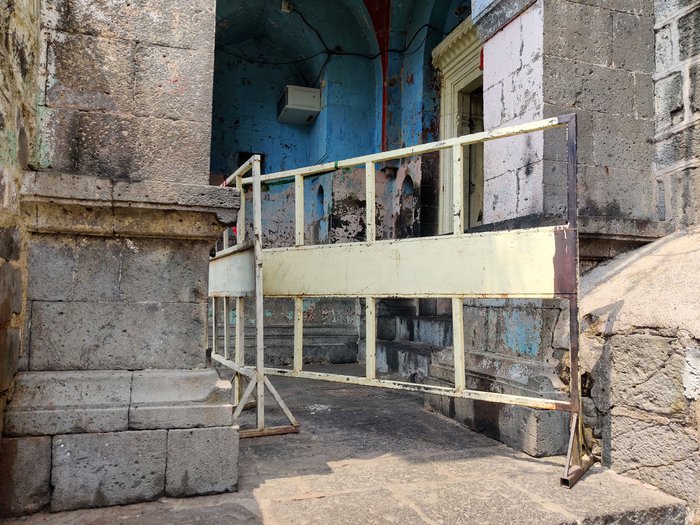
The Tuljapur temple has been shut since April
The
tahsil
office decided to issue pre-approved passes to pilgrims, and allowed only 2,000 people per day to enter Tuljapur town. The number was gradually increased, and by January 2021 there were about 30,000 visitors every day
More than 90 per cent of the pilgrims are from outside Osmanabad, adds Tandale. “They come from all over Maharashtra, Andhra Pradesh, Telangana, Karnataka and other places.”
So reopening the temple in mid-November 2020, after the first Covid-19 wave, was a risk. Especially since the temple’s pilgrims had contributed to an increase in caseload during the first wave.
Even though the temple was shut from March 17, 2020 and the nationwide lockdown followed a few days later, devotees continued to come for a glimpse of the goddess. “They would come to the main door and pay their respects from outside,” says a district official who did not wish to be named. “The devotees managed to come to Tuljapur in spite of the lockdown. We had more than 5,000 visitors a day in April-May [2020]. Even after the lockdown, cases here didn’t go down.”
At the end of May 2020, when the district administration tested the priests in Tuljapur – nearly 3,500 – 20 per cent of them tested positive for Covid-19, says Tandale. From June, the tahsil administration started demanding Covid-negative reports before letting people enter Tuljapur. “It brought things under control,” says Tandale. “But Tuljapur was the worst affected during the first wave.”
It was not surprising.
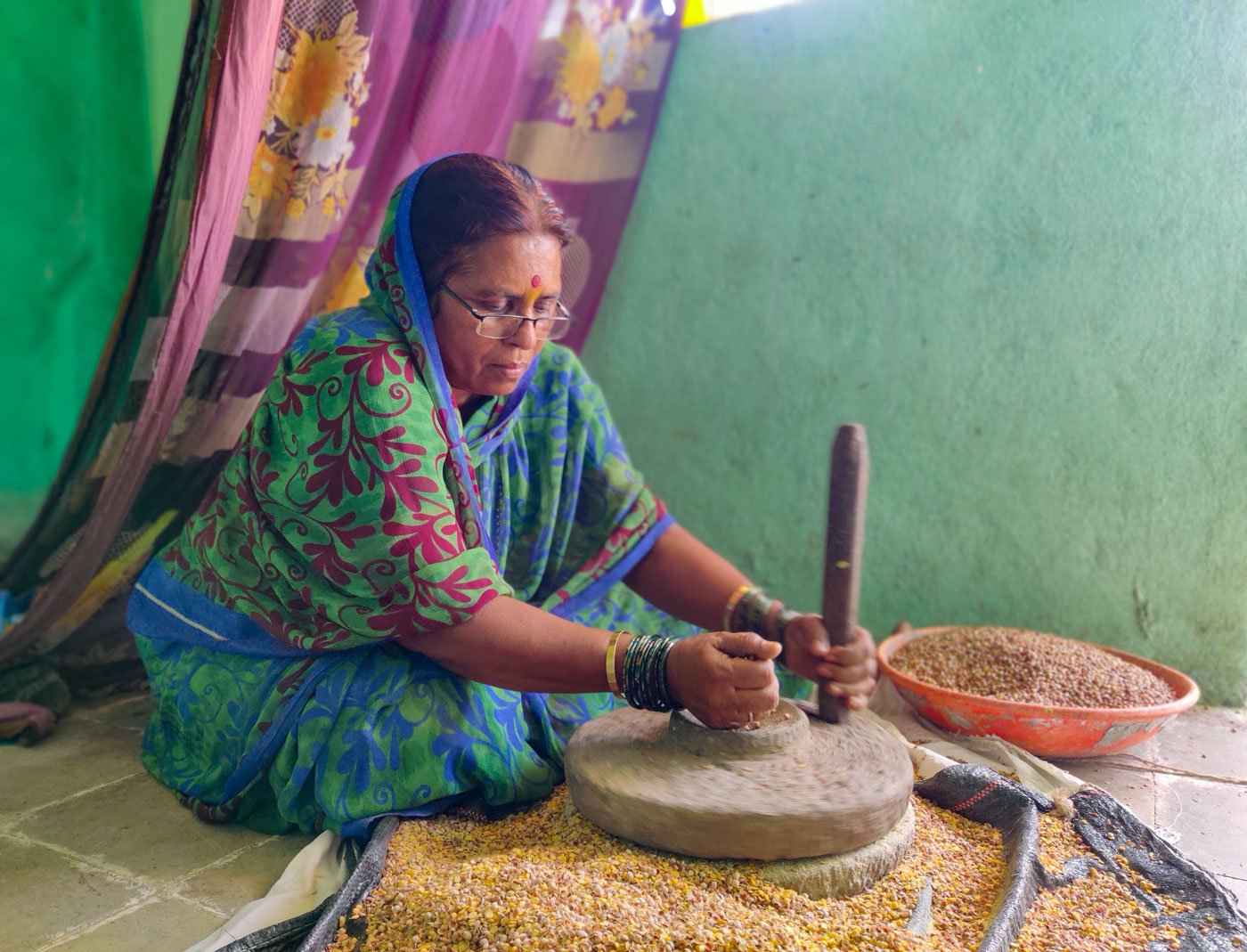

Mandakini (left) and Kalyani Salunkhe make puran polis for the devotees. The temple's closure gives them a break but it has ruined the family income
Some of the ritual practices aided the spread of the coronavirus. One of them is the practice of offering
puran poli
, a sweet flatbread, prepared by women in the priests’ homes. Devotees arrive with the ingredients required to make the dish and after consuming a few
polis
there, they offer the rest to the goddess in the temple.
In pre-Covid days, 62-year-old Mandakini Salunkhe, made
puran polis
for almost 100 devotees every day. Her son, Nagesh, 35, is a priest in the temple. “Don’t even ask for an estimate of the number prepared during festivals. I have spent my entire life doing this,” she says. “For the first time in my life, I got to rest a little. But people would trickle in even during the first wave.”
Making puran poli is no easy task. Besides getting the taste right, the round poli have to be flipped on a hot pan to fry both sides. “There is not a single woman in Tuljapur who doesn’t have burn marks on her hands,” says Kalyani, Nagesh’s 30-year-old wife. “We are getting a break for sure, but it has also ruined our livelihood.”
Nagesh, whose ancestors were also priests, inherited his occupation. It is his only source of income. “The devotees bring pulses, oil, rice and other rations with them,” he says. “We use some of it to feed them, and keep the rest for the household. When we perform a pooja on the devotees’ behalf, they pay us a gratuity. We [priests] used to earn about Rs. 18,000 per month. All of that has completely stopped now.”
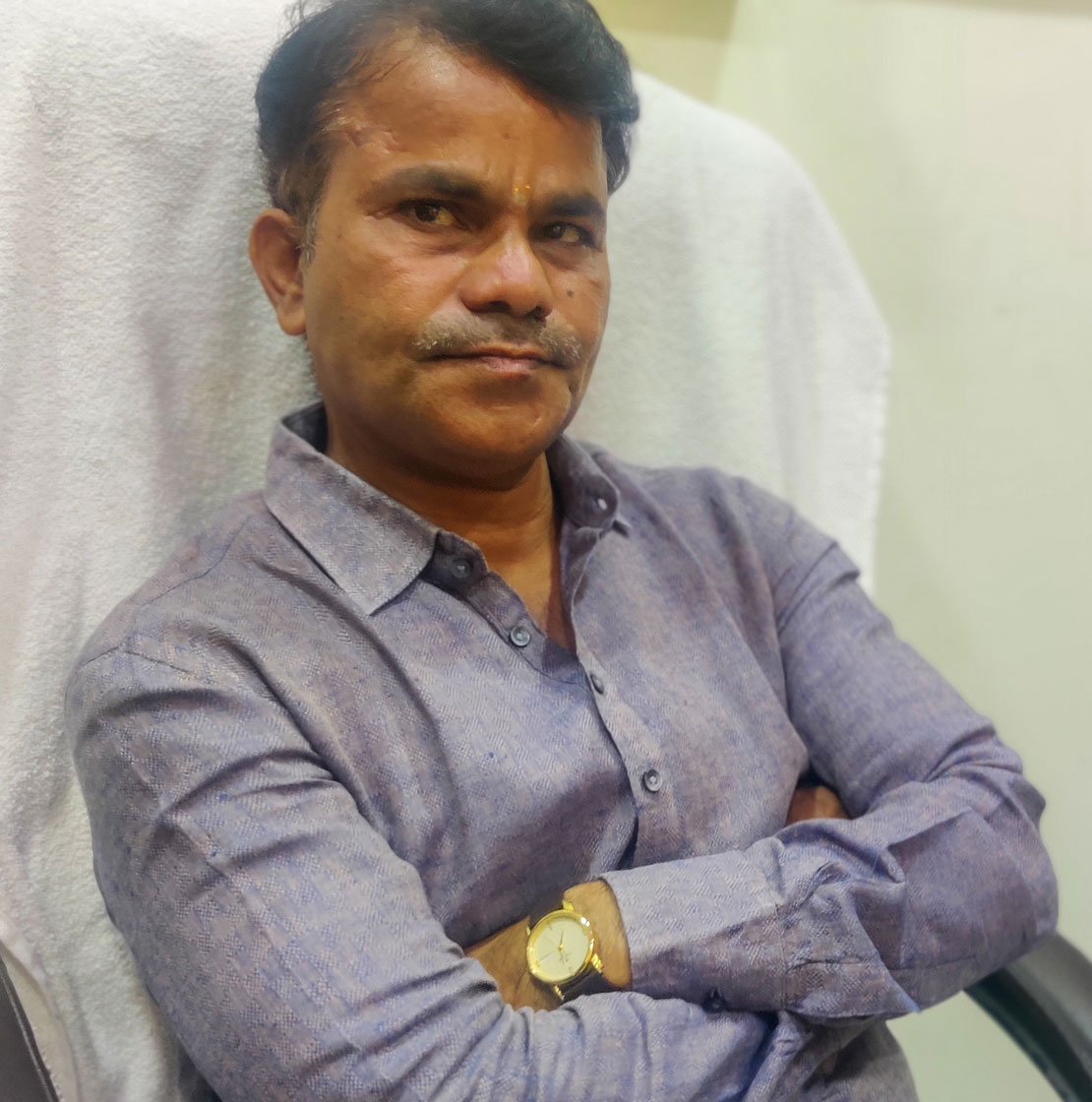
Gulchand Vyavahare led the agitation to reopen the temple
He quickly clarifies that he doesn’t advocate opening the temple, because people’s lives are at stake. “You can’t risk people’s lives to revive the economy. We understand the extraordinary circumstances,” he says. “I just wish we received some relief.”
The tahsil office sought the help of priests and the town’s residents to keep the pilgrims out of Tuljapur. “We continued to conduct the rituals with the help of the head priests,” says Tandale. “Even during Navratri last year, we didn’t receive devotees. We did not allow anyone from outside Tuljapur to enter the temple. A palanquin arrives from Ahmadnagar [Burhannagar Devi temple] with great fanfare every year, but this time we asked them to send it in a car without stopping anywhere.”
But when the first wave ebbed in October 2020, people dropped their guard, thinking the pandemic was a thing of the past.
Demands for the Tuljapur temple to be reopened began and a protest was held in the first week of November 2020. Office bearers of Bharatiya Janata Party (BJP), the opposition party in the state legislative assembly, led the protest. “Hotels, restaurants and bars had opened up. Then why keep the temples shut?” says Gulchand Vyavahare, BJP’s Osmanabad district secretary. “People’s livelihoods are dependent on it. Does Covid only spread through the temples?”
In Tuljapur, the economy, politics and faith are intertwined, says a
tahsil
official speaking on condition of anonymity. “It can’t be seen in isolation,” he says. “People emphasise on the economy because it sounds more convincing than faith. In reality, the three together created the resistance to the temple’s closure.”
The campaign to reopen temples, which was spread across Maharashtra, succeeded. Chief Minister Uddhav Thackeray allowed the temples to be opened in mid-November 2020.
Tuljapur’s local administration decided to issue pre-approved passes to pilgrims, and allowed only 2,000 people per day to enter the town. The number was gradually increased, and by January 2021 there were about 30,000 visitors every day. It became difficult to manage, says Jaysingh. “When 30,000 passes were given, 10,000 more fought to get in without a pass. Devotees coming from far to seek the goddess’s blessings won’t take ‘no’ for any reason,” he says. “We can’t be complacent even after the second wave subsides. It is easy for some people to underestimate the virus. You don’t understand it until you experience it.”
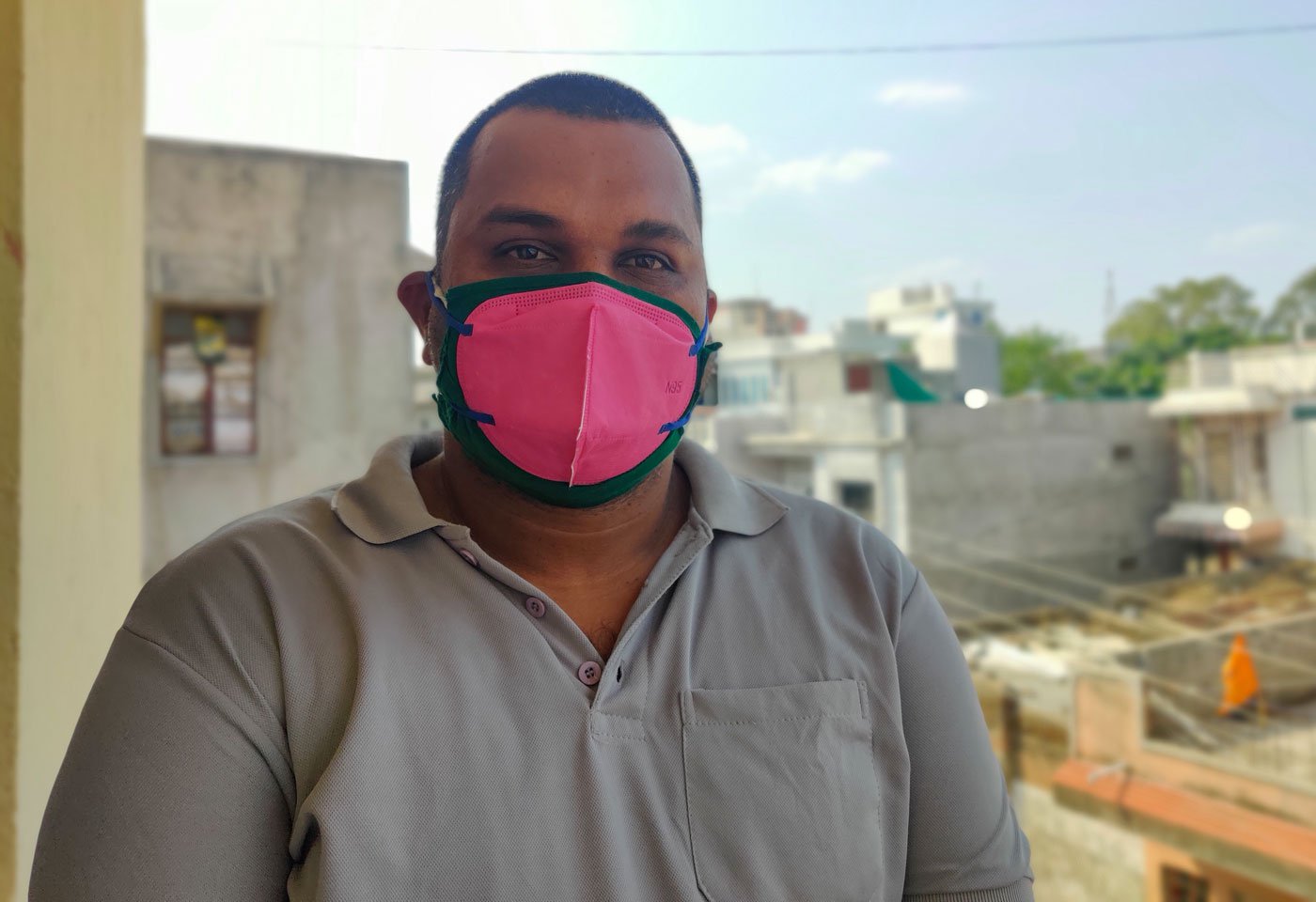
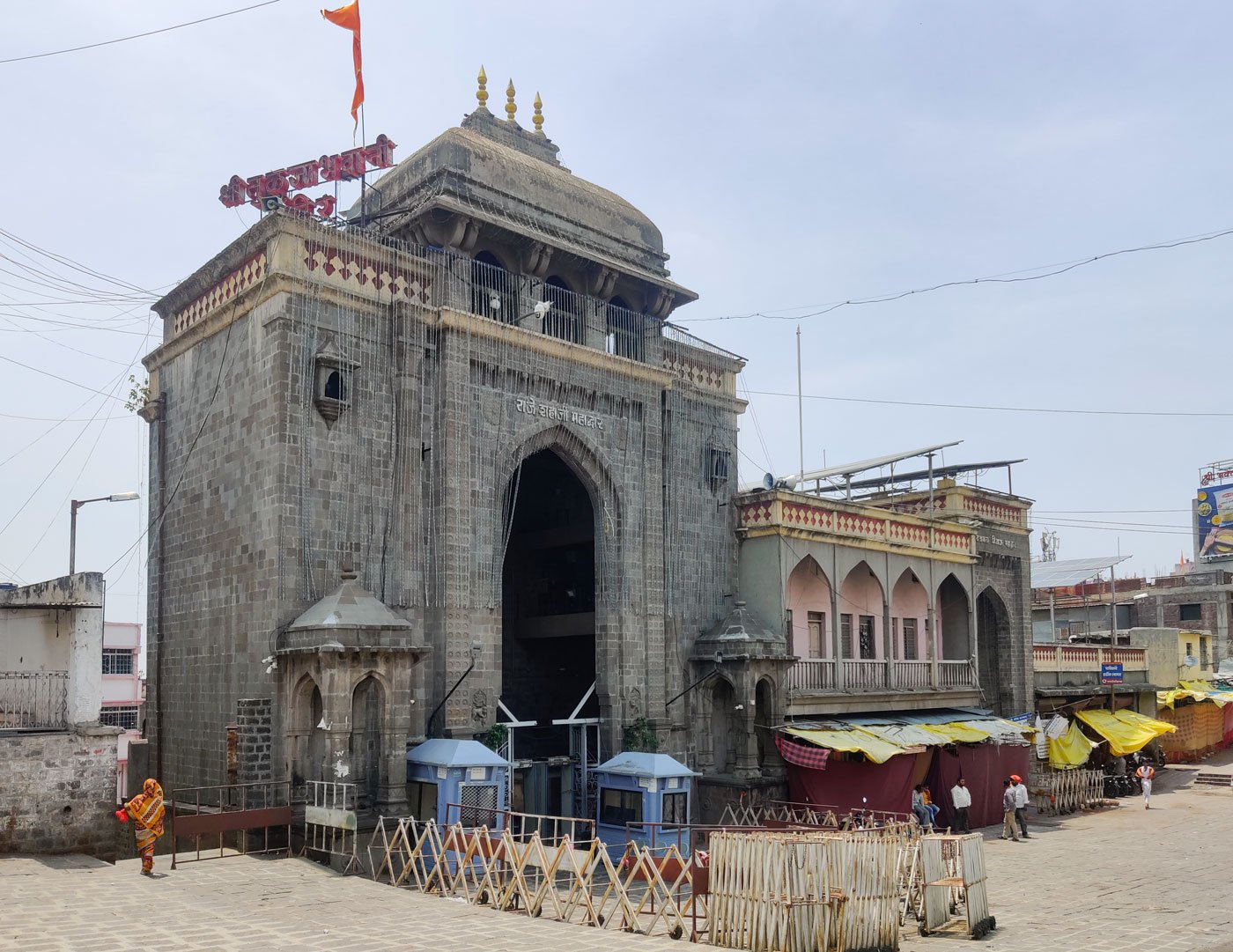
Nagesh Salunkhe has been losing out on the earnings from performing poojas in the Tuljapur temple (right)
The number of Covid cases in Osmanabad district shot up after visitors to the Tuljapur temple increased. In February, the district had recorded about 380 Covid cases. In March, the number was nearly 3,050 – nine times higher. In April, there were more than 17,800 cases, which burdened Osmanabad’s health infrastructure.
“Apart from the temple in Tuljapur, there was no other place in Osmanabad where mass gatherings happened on this scale,” says a district official who does not wish to be named. “There is no doubt it intensified the second wave of Covid-19. It was similar to the Kumbh [in Uttar Pradesh] but on a smaller scale. ”
When Tuljapur’s priests were tested for Covid-19 during the second wave, 32 per cent of them tested positive. About 50 died, says Tandale.
Of the eight tahsils in Osmanabad, Tuljapur tahsil stands second in terms of caseload and fatality rate. Osmanabad tahsil records the highest cases and fatalities because it hosts the district’s only major public hospital, the Civil Hospital, where critical patients from across the district are treated.
Osmanabad falls in the agrarian region of Marathwada, which has witnessed drought, distress and debt, and accounts for the highest number of farmers’ deaths by suicide in Maharashtra. Already grappling with climate change, water scarcity and agrarian crisis, people in the district can’t even depend on the inadequate medical infrastructure for their health.

Sandeep Agarwal does not mind losing sales from shutting his grocery shop until it is safe for the town to receive visitors
In April this year, when the Tulja Bhavani temple was shut once again, Tuljapur’s lanes were deserted, the shops shuttered, and an eerie silence returned to the town for a second year in a row.
“Keeping the temple shut for a prolonged period in these [political] times is risky business,” says a district official not willing to be named. “It can create law and order issues.”
But people in Tuljapur decided to be safe, even though the dwindling economy directly affects them.
Sandeep Agarwal, 43, who runs a
kirana
(grocery) shop in the town, says that his daily sales of about Rs. 30,000 in the pre-Covid days has come down to almost nil. “But I don’t want the temple to open until most of the country is vaccinated,” he says, standing near the shuttered shops. “We live only once. If we survive the pandemic, we will revive the economy. Those who are eager for the temple to reopen don’t live in Osmanabad.”
Agarwal is right.
Tukojibua, a
mahant
(senior priest) of the Tulja Bhavani temple, receives at least 20 phone calls a day from all over the country, asking him when the temple will reopen. “I keep telling them that people’s lives are in danger, and that let’s assume we have devoted 2020 and 2021 to healthcare,” he says. “The virus cannot come between [you and] your faith. You can stay where you are and still pray to the goddess.”
However, the devotees of Tulja Bhavani desire to receive her blessings in person or at least touch the doorway of her temple, the
mahant
tells me.
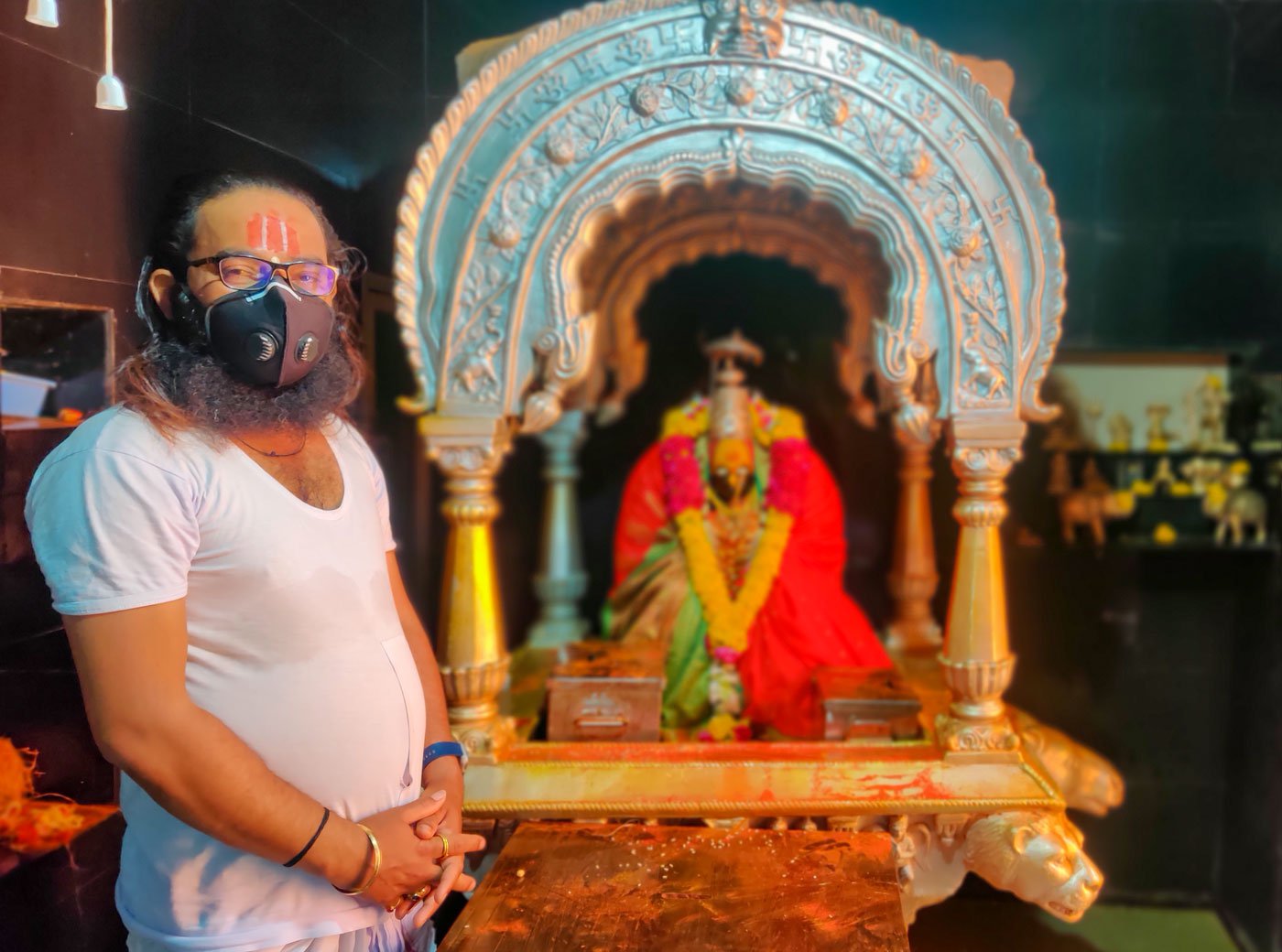
Mahant Tukojibua has been convincing the temple's devotees to stay where they are and pray to the goddess from there
Just as Tukojibua finishes, his phone rings. It is a devotee from Pune, 300 kilometres from Tuljapur.
“ Sashtaang namaskar ,” the devotee greets him.
“How are you?” asks the
mahant
.
“The temple needs to open up soon,” implores the speaker from Pune. “God would never do anything wrong,” he adds. “We must think positive. Whatever we are, it is because of Tulja Bhavani. Even doctors ask us to have faith in god.”
Tukojibua reasons with him and tells him to follow the pooja being streamed online. The temple has been broadcasting the rituals since the Covid-19 lockdowns began.
But the devotee is not convinced. “Covid would never spread because of crowds in the temple,” he tells the priest, and promises to walk the distance of 300 kilometres the minute the temple reopens.
